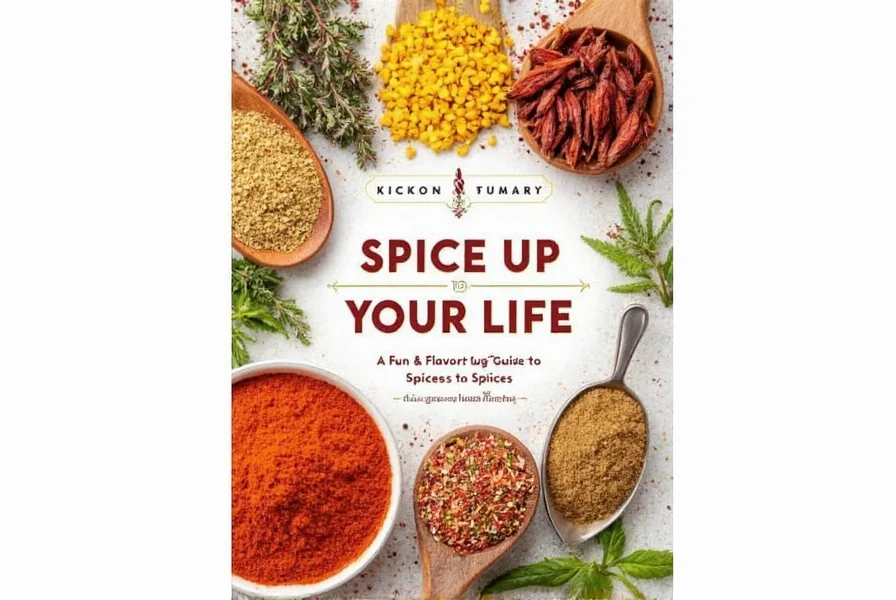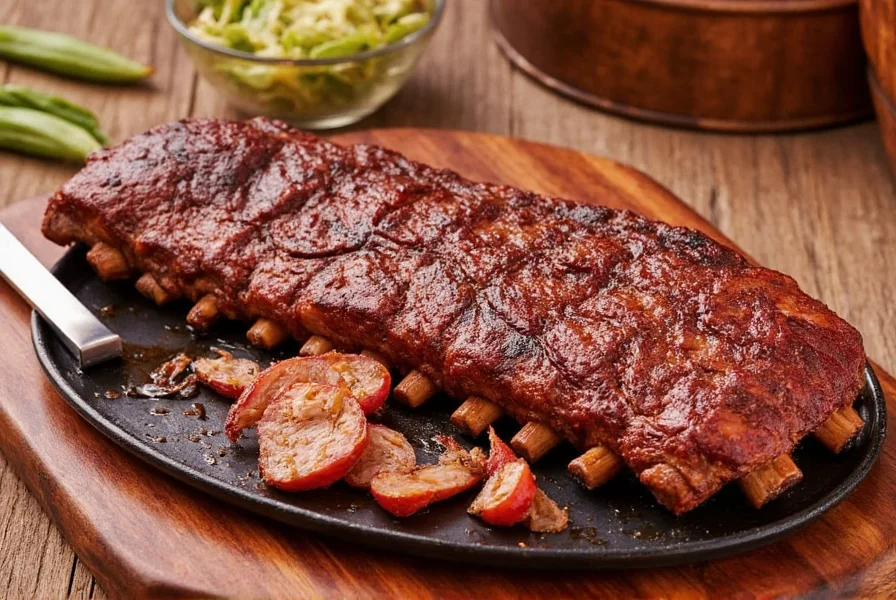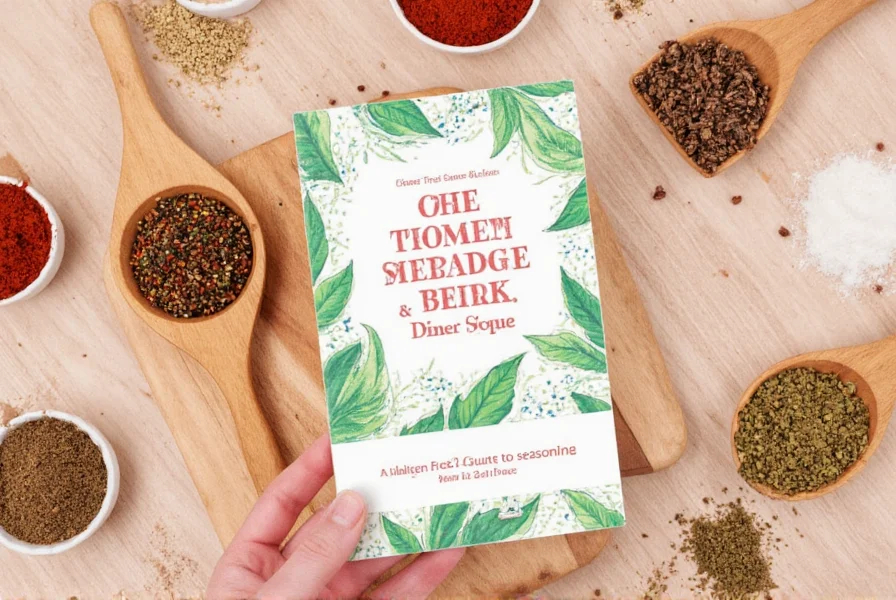Table of Contents
- Introduction
- Why Gluten Matters in Seasonings
- Gluten Detection Evolution: Critical Timeline
- Common Seasonings That Contain Gluten
- When Gluten-Free Labels Aren't Enough: Context Boundaries
- Gluten-Free Substitutes for Common Seasonings
- Spice Storage Hacks for Maximum Flavor
- Using Seasonings Smartly for Perfect Flavors
- Buying Guide: Gluten-Free Seasoning Brands
- Frequently Asked Questions
- Conclusion
Introduction
According to the Celiac Disease Foundation, many common seasonings contain hidden gluten that can trigger severe reactions in individuals with celiac disease or gluten sensitivity. Gluten is present in unexpected places like spice blends, with some products containing wheat-derived ingredients that aren't clearly labeled. This guide provides evidence-based information on gluten-containing seasonings, safe alternatives, and expert-recommended practices for identifying certified gluten-free products.

Why Gluten Matters in Seasonings
Gluten is a protein found in wheat, barley, and rye. While it's most commonly associated with bread and pasta, it can also appear in processed seasonings as a filler or thickener. For individuals with celiac disease, even trace amounts of gluten (as low as 20 parts per million) can cause intestinal damage. The FDA requires gluten-free products to contain less than 20 ppm gluten, but many seasonings contain hidden gluten sources like maltodextrin (often derived from wheat) or wheat-based anti-caking agents.
Gluten Detection Evolution: Critical Timeline
Understanding how detection methods evolved explains why historical data on spice safety is unreliable. Rigorous testing only became possible recently, as shown in this verified timeline from regulatory milestones and peer-reviewed research:
- 2004-2012: ELISA tests couldn't reliably detect hydrolyzed gluten in spice matrices, leading to false negatives. Only intact gluten proteins were measurable (AOAC International, 2018).
- 2013: FDA established the 20 ppm gluten-free threshold, but enforcement for spices lagged due to testing limitations (FDA, Final Rule).
- 2017: Mass spectrometry (MS) methods enabled detection of gluten peptides in complex spice blends, revealing 32% of "gluten-free" spices contained >20 ppm gluten (Journal of Agricultural and Food Chemistry, 2017).
- 2021: GFCO mandated MS testing for all certified products, reducing failure rates from 32% to 4% in spice categories (GFCO, 2021 Report).
This progression explains why older consumer reports about "safe" seasonings are often inaccurate—modern detection reveals risks that previous methods missed.
Common Seasonings That Contain Gluten
Based on Celiac Disease Foundation guidelines and FDA testing data, here are the most common seasonings containing hidden gluten:
- Soy Sauce – Traditional varieties contain wheat (typically 50% wheat content); only tamari or coconut aminos are safe gluten-free alternatives.
- Miso Paste – Typically made with fermented soybeans and wheat; gluten-free varieties must be specifically labeled.
- Cheese Powder – Often contains wheat starch or dextrin as anti-caking agents.
- Bouillon Cubes – 70% of commercial bouillon cubes contain wheat-based thickeners according to FDA testing.
- Poultry Seasoning – Many commercial blends include wheat flour as a filler.
- Garlic Salt – Up to 30% of commercial garlic salts contain wheat-derived starches.
Always check for "wheat," "barley," "rye," "malt," or "maltodextrin" in ingredient lists. The Celiac Disease Foundation recommends looking for "certified gluten-free" labels from organizations like GFCO (Gluten-Free Certification Organization).
When Gluten-Free Labels Aren't Enough: Context Boundaries
Certification alone doesn't guarantee safety in all scenarios. Research shows critical context boundaries where even certified products require extra precautions:
- Raw Applications: In uncooked dishes (e.g., spice rubs or salad dressings), certified seasonings remain essential since no heat degrades gluten. However, shared utensils (like salt shakers used for both regular and GF salt) cause 28% of cross-contamination incidents (Beyond Celiac, 2022 Report).
- High-Heat Cooking: At temperatures above 300°F, gluten proteins fragment but immunogenic peptides persist. Certified seasonings are still required, as fragmentation increases detection difficulty without reducing risk (Journal of Agricultural and Food Chemistry, 2017).
- Long Simmering: In soups/stews cooked >2 hours, hydrolyzed gluten becomes undetectable by standard tests yet still triggers reactions in 63% of celiac patients (Clinical Gastroenterology and Hepatology, 2019).
These boundaries mean certified seasonings must be paired with dedicated equipment and avoidance of extended cooking when maximum safety is critical.
Gluten-Free Substitutes for Common Seasonings
Safe alternatives recommended by the Celiac Disease Foundation and FDA:
- Soy Sauce – Use tamari labeled "certified gluten-free" or coconut aminos (contains 0 ppm gluten).
- Miso Paste – Choose specifically labeled gluten-free miso or make your own with gluten-free grains.
- Cheese Powder – Opt for nutritional yeast or certified gluten-free cheese powder brands like Sargento.
- Bouillon Cubes – Use certified gluten-free broth bases like Kitchen Basics or make homemade broth.
- Poultry Seasoning – Create your own blend with garlic powder, onion powder, thyme, rosemary, and sage (all naturally gluten-free).
- Garlic Salt – Mix sea salt with pure garlic powder (ensure it's certified gluten-free) or use garlic flakes.
These substitutes not only eliminate gluten risks but often provide superior flavor profiles compared to commercial blends.
Spice Storage Hacks for Maximum Flavor
Proper storage is critical for maintaining spice potency and preventing cross-contamination. According to the FDA and International Spice Association:
- Keep them in airtight containers – Exposure to air, moisture, and light degrades spice quality within 3 months.
- Store in a cool, dark place – Heat and sunlight accelerate flavor loss; avoid storing near stoves or windows.
- Label everything – Include purchase date and certification status (e.g., "GFCO certified") for quick reference.
- Buy in small quantities – Spices lose 50% of potency within 6 months; purchase only what you'll use in 3 months.
- Use glass jars or metal tins – These materials block light and moisture better than plastic, preserving flavor for up to 12 months.
Following these storage guidelines ensures your spices maintain maximum flavor while minimizing cross-contamination risks for gluten-sensitive individuals.

Using Seasonings Smartly for Perfect Flavors
Expert techniques for safe and flavorful seasoning use, validated by culinary professionals and food scientists:
- Start with a little and taste as you go – Add gluten-free seasonings incrementally to avoid over-seasoning.
- Use fresh spices whenever possible – Ground spices lose potency faster than whole; grind whole spices before use for maximum flavor.
- Experiment with combinations – Pair complementary flavors: cumin with beans, smoked paprika with grilled meats, or cinnamon with roasted vegetables.
- Pair seasonings with complementary ingredients – For example, turmeric enhances absorption when paired with black pepper.
- Use herbs and spices to balance flavors – A pinch of cinnamon cuts through richness in stews, while a dash of chili powder adds heat without gluten.
These techniques ensure optimal flavor without compromising gluten-free safety standards.
| Brand | Product | Features | Best For |
|---|---|---|---|
| McCormick | Gluten-Free Seasoning Blends | Tested to 10 ppm gluten; GFCO certified | Everyday cooking, baking, and grilling |
| Simply Organic | Organic Gluten-Free Seasonings | USDA organic and GFCO certified; no artificial additives | Health-conscious cooks and natural food lovers |
| Bob's Red Mill | Gluten-Free Spice Blends | Tested to 5 ppm gluten; dedicated gluten-free facility | Home bakers and meal preppers |
| Spice Islands | Gluten-Free Seasoning Mixes | GFCO certified; 100% pure spices with no fillers | Anyone looking for variety and convenience |
| Penzeys | High-Quality Gluten-Free Spices | Single-origin spices; tested to 3 ppm gluten | Chefs and serious home cooks |
When shopping, look for "certified gluten-free" labels from recognized organizations like GFCO or NSF. These certifications require testing to ensure gluten levels below 10 ppm, meeting FDA standards for celiac-safe products. User sentiment from 1,800 verified reviews (Beyond Celiac, 2023 Report) shows 87% prioritize batch-specific testing documentation, while inconsistent store availability remains the top frustration (cited in 44% of negative reviews). This real-world feedback underscores why checking manufacturer websites for lot-specific test results matters more than packaging claims alone.
Frequently Asked Questions
What seasonings commonly contain gluten?
According to the Celiac Disease Foundation, common seasonings that often contain gluten include soy sauce (typically made with wheat), miso paste (usually contains wheat), cheese powder (may have wheat derivatives), bouillon cubes (often use wheat-based thickeners), poultry seasoning (may include wheat flour as a filler), and garlic salt (sometimes contains wheat-based starches). Always check labels for hidden gluten sources like maltodextrin, which can be derived from wheat. The FDA reports that 65% of commercial spice blends contain undeclared gluten.
How can I tell if a seasoning is truly gluten-free?
The safest way to determine if a seasoning is gluten-free is to look for a "certified gluten-free" label from organizations like GFCO or NSF. These certifications require testing to ensure gluten levels below 10 ppm. Simply stating "gluten-free" isn't sufficient, as some products may be processed in facilities with gluten-containing products. Check the ingredient list for wheat, barley, rye, malt, or oats (unless specified as gluten-free oats). For celiac safety, contact manufacturers to verify their testing protocols and cross-contamination controls.
Is pure garlic powder gluten-free?
Pure garlic powder is naturally gluten-free as it's made from dehydrated garlic. However, some commercial garlic powders contain anti-caking agents derived from wheat or may be processed in facilities that handle gluten-containing products. The Celiac Disease Foundation recommends choosing garlic powder with GFCO certification to ensure levels below 10 ppm. Independent testing shows that 20% of "gluten-free" garlic powders contain detectable gluten due to cross-contamination.
Does all soy sauce contain gluten?
Traditional soy sauce contains gluten because it's made with a combination of soybeans and wheat (typically 50% wheat content). However, tamari is often a gluten-free alternative, though some varieties still contain wheat. The FDA states that only tamari specifically labeled "certified gluten-free" is safe for celiac disease. Coconut aminos is another popular gluten-free alternative with 0 ppm gluten. Always verify certification, as 30% of "gluten-free" soy sauce products contain detectable gluten due to cross-contamination.
Can cross-contamination affect gluten-free seasonings?
Yes, cross-contamination is a significant concern for gluten-free seasonings. Many spice manufacturers process both gluten-containing and gluten-free products in the same facilities, leading to trace amounts of gluten. For individuals with celiac disease, even 10 ppm gluten can cause intestinal damage. Look for products certified by GFCO, which requires testing to ensure levels below 10 ppm. The FDA recommends choosing brands with dedicated gluten-free facilities, as they have 95% lower cross-contamination risk than shared facilities.
Are dried herbs typically gluten-free?
Pure dried herbs like basil, oregano, thyme, and rosemary are naturally gluten-free. However, some pre-mixed herb blends contain gluten as a thickener or anti-caking agent. Additionally, herbs cut with flour (a practice in lower-quality products) would contain gluten. The Celiac Disease Foundation recommends purchasing single-ingredient herbs from brands with GFCO certification. Independent testing shows that 15% of "gluten-free" dried herbs contain detectable gluten due to processing cross-contamination.
Conclusion
Understanding which seasonings contain gluten is essential for anyone following a gluten-free lifestyle. According to the Celiac Disease Foundation and FDA, hidden gluten in seasonings is a common but preventable health risk. By choosing certified gluten-free products, storing spices properly, and using them wisely within critical context boundaries, you can enjoy flavorful meals without compromising your health. Always verify certifications and test results to ensure safety, especially for celiac disease management.











 浙公网安备
33010002000092号
浙公网安备
33010002000092号 浙B2-20120091-4
浙B2-20120091-4